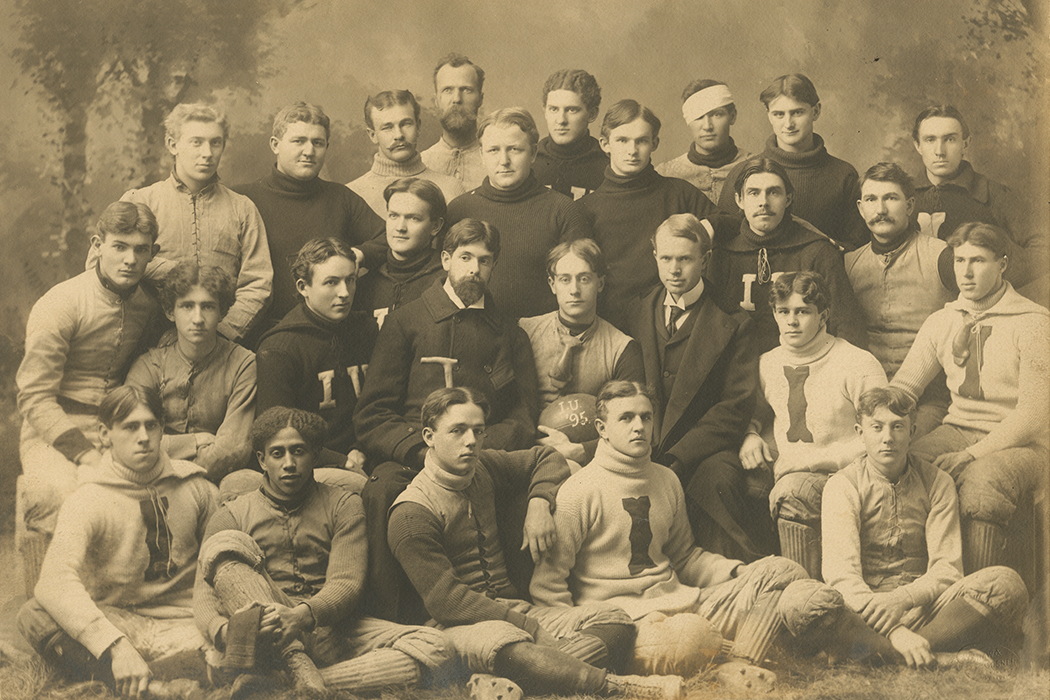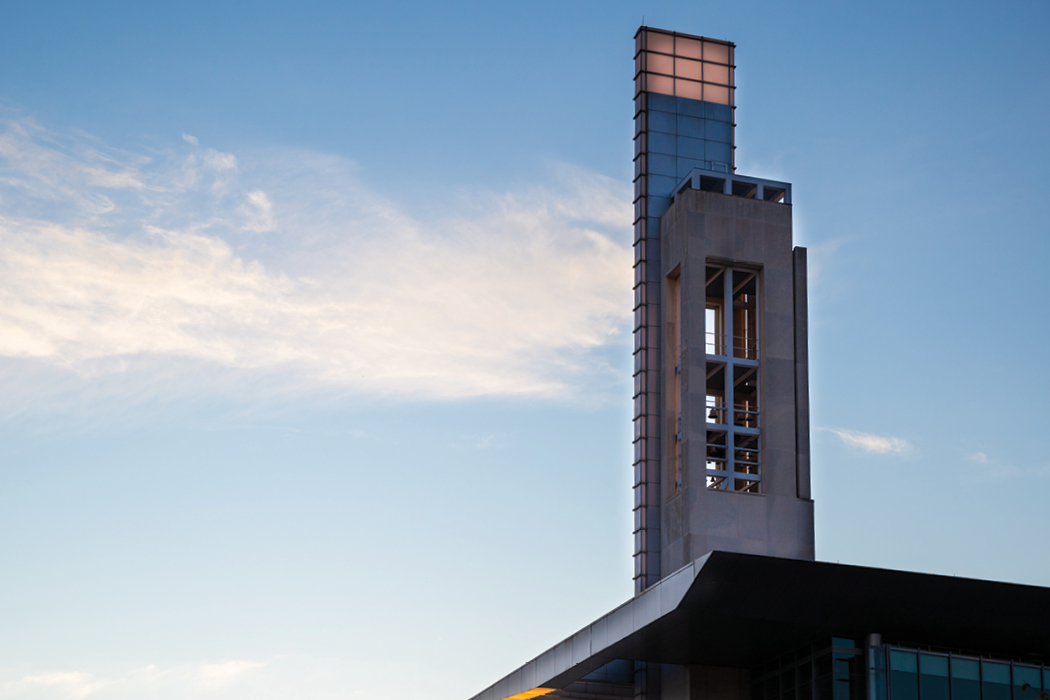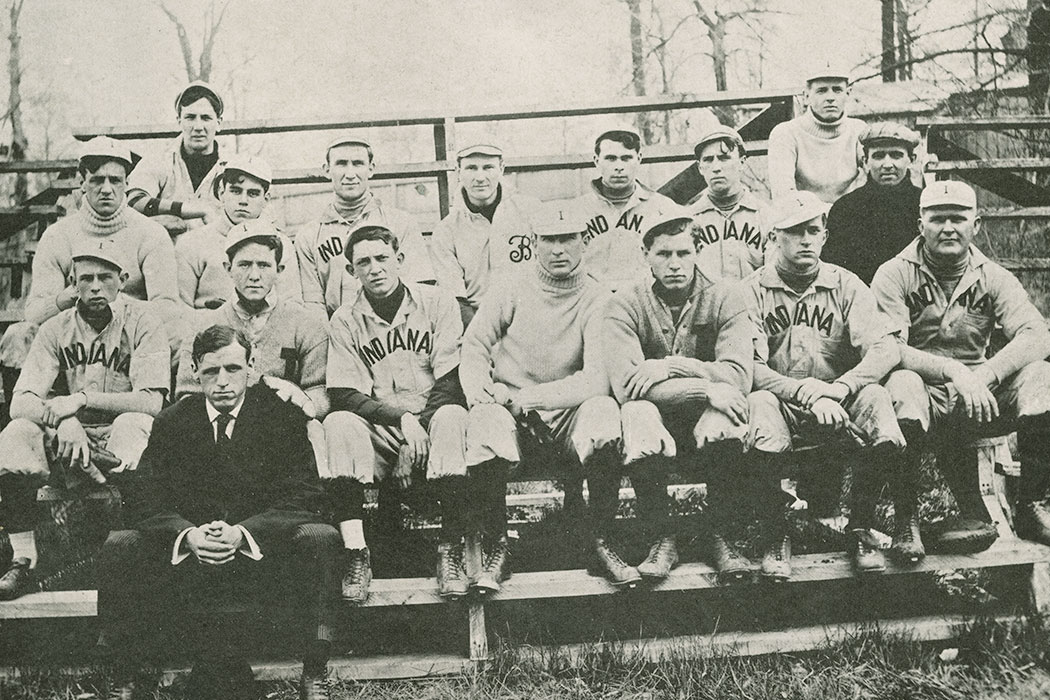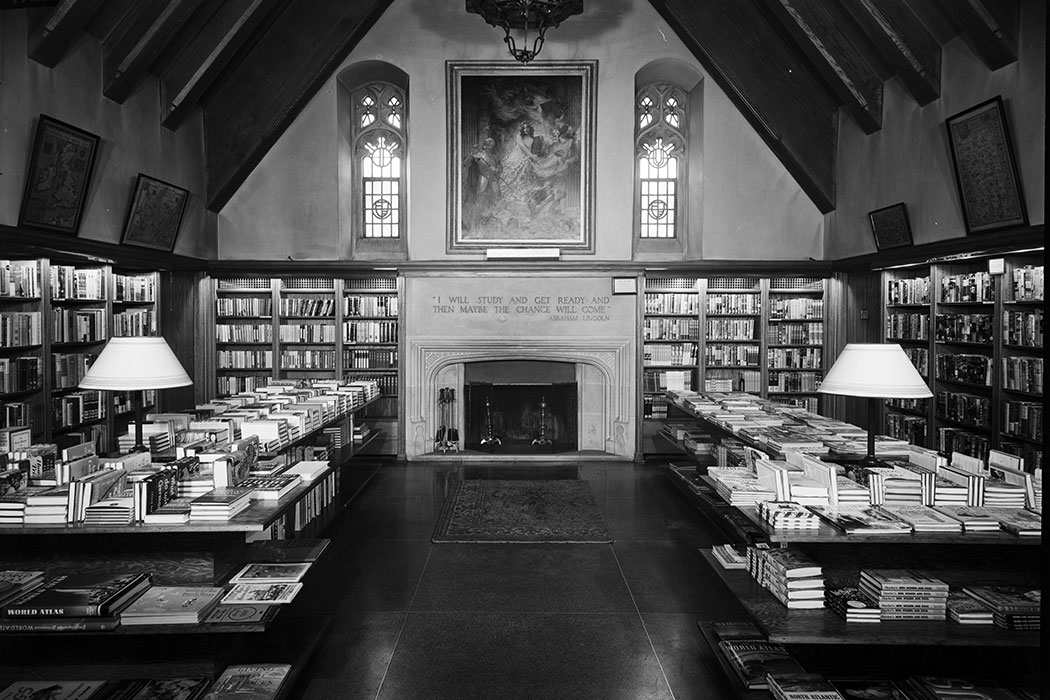The Figures that Unite Us: A History of IU Mascots
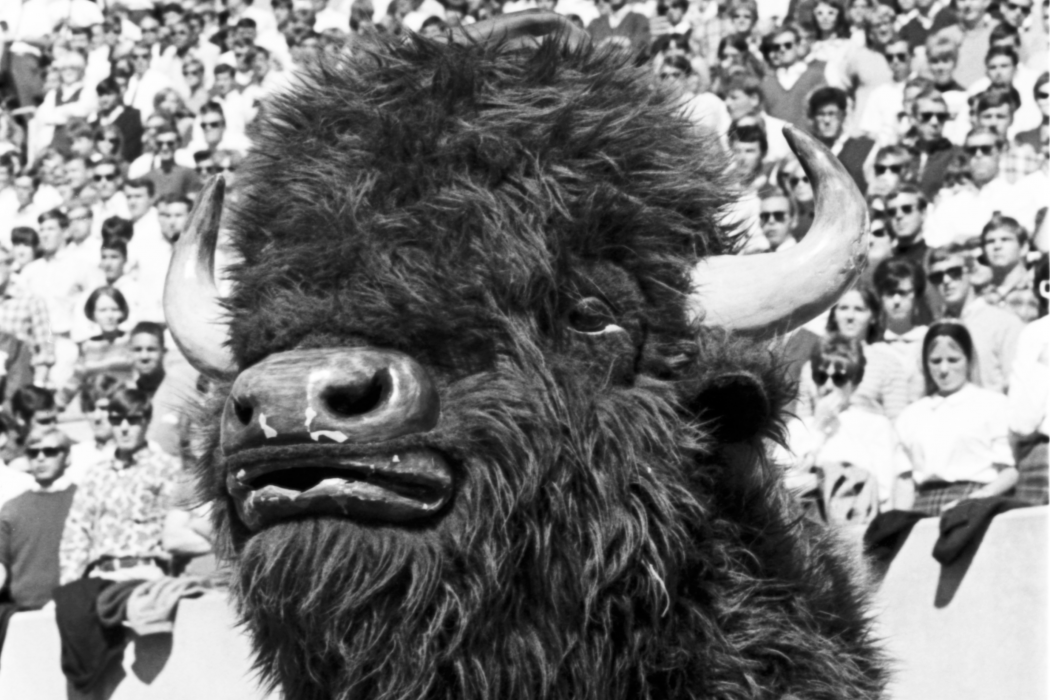
If a mascot symbolizes the identity of a team, then the long and varied history of IU mascots provides a fascinating insight into the way IU’s identity has changed over the years. Who we are and how we represent ourselves, what figures we rally around, has been shaped by many factors: our physical surroundings, our cultural heritage, popular preferences of the moment, and even costume wearability. Here is a brief history of IU mascots, broken down by campus.
IU Bloomington
IU Bloomington’s sports teams have long been called the “Hoosiers,” but the physical representation of what a Hoosier is has changed over the years. The earliest years of IUB “mascots” were decidedly haphazard, plentiful, and short-lived. Through the first half of the 20th century, the many and varied mascots adopted or suggested by the IUB student body included: an owl (1908); a raccoon (1909); the toddler son of athletic trainer “Bernie” Bernstein (1912); “Jim Watson,” a golden eagle shot and doctored up the spring of 1916 (by fall there were calls to release him); a goat was favorited by Indiana Daily Student editors in 1923 though economics professor C.J. Crobaugh purported a skunk would be a stronger choice; a collie (1935); Theta Chi’s house dog, Ox the bulldog (late 1950s-early 1960s)…the list goes on.
IU’s longest running Hoosier mascot was the bison (pictured above), chosen in October 1965 by IU’s student senate and inspired by the bison on the state seal of Indiana. In fact, the bison was chosen for IU’s mascot around the same time it became the logo for Nick’s English Hut in Bloomington. Alas, the Nick’s bison outlasted the IU bison.
There were problems with the bison from the beginning. First, IU students wanted to purchase a live bison that would run around the field at games. But this was cost prohibitive, so they had to settle for a bison costume. Unfortunately, the bison costume was poorly designed, and students did not want to wear it. It was uncomfortable, held a lot of heat, and the mask was very difficult to see through – the only opening being the holes in the animal’s nostrils – which meant the wearer had to be led around the field by cheerleaders holding a rope. For these reasons, the bison was discontinued in 1969.
In 1979, another attempt at a mascot was introduced: a red-bearded man in a cowboy hat called “Mr. Hoosier Pride.” He was retired after only one football season, due to complaints that he was ridiculous and offensive. Today, IU Bloomington, while still the “Hoosiers,” does not have a mascot. Many people have advocated for the return of the bison, but just as many or more people are content to have no mascot at all.

IU South Bend
IU South Bend’s Student Government named the Titan the official school mascot in 1968, but it would take a design contest three years later to put a face to that name. “I don’t even know what a Titan looks like, other than it being a missile,” bookstore employee Doris Brown told student newspaper The Preface when the contest was launched.
This was an early effort toward creating the mascot who came to be called Titus Titan, a playful take on a Roman centurion featuring a troll-like oversized head and red felt cape. A 2016 redesign found Titus transformed from “a bobble-headed cartoon caricature of what a fierce fighting machine might be” to a “towering athletic figure that can truly be feared by our enemies,” according to The Preface.
Straight from the film 300, Titus 2.0 wears a red-feathered gold helmet, a leather battle skirt, and body armor suggesting fully developed abdominal muscles. Early reviews were positive: “He actually has impressions, rather than one giant grin,” one student told The Preface shortly after his unveiling. “I personally think he’s a lot cuter than the whole bobble-head thing,” said another.

IU Kokomo
IU Kokomo has a strong tradition of campus participation in selecting and naming its mascots. In early years, the IU Kokomo basketball team was affectionately known as “Little Red” in The Student Voice newspaper. During a period of enthusiasm for Hoosier basketball and growing participation in athletics on the Kokomo campus, students voted for a new team nickname, the IU Kokomo Knights.
Nearly twenty years later and needing a fresh image, the campus proposed and selected a new nickname, the Cougars. Kingston Cougar, the now beloved mascot of IU Kokomo, was named by popular vote in 2011. The name Kingston holds special significance in Kokomo as George Kingston, the inventor of the gas carburetor, was a previous owner of the mansion that IU Kokomo once called home. Kingston Cougar is often seen roaming the halls and sidewalks, cheering on the sidelines of athletic events, and welcoming the Kokomo community to campus.

IUPUI
With the start of intercollegiate athletics at IUPUI, teams were called “the Metros.” There was no mascot who appeared at games, but the athletics department used a figure of “Metroman” in some publications. In 1989, the IUPUI student government had a contest to rename the teams. One proposal was for them to be called “the River Rats.” That did not happen. Probably reporting on the contest, the Indianapolis Star on January 22, 1989, noted that someone had the idea for the Metros mascot to be an accordion bus, as the city’s public transport system was called “Metro.” This, too, did not happen.
In 1998, with the advent of Division I sports, IUPUI athletics teams became “the Jaguars.” The first school mascot was “Jinx.” Jinx the jaguar was joined by Jawz in 2005. (Both mascots are males.) In 2015, Jazzy, a female jaguar, was added to the menagerie.

IU East
IU East has had two mascots, both of whom reflect the spirit and current age of the campus: The Pioneers and The Red Wolves. When IU East first started in 1971, they offered associate degrees, and athletes participated in club sports. The biggest club sport at the time was basketball, and the team needed a name.
In the fall of 1972, the campus held a “nickname the team” contest, and from more than 400 entries, five people submitted the name Pioneers, as the university was “pioneering in the field of education in Eastern Indiana.” The name was announced on November 22, 1972, and the mascot remained the Pioneers until 2007, when IU East transitioned fully to a bachelor’s and master’s degree granting campus and joined intercollegiate sports.
At that time, IU East held another nomination process, receiving more than 165 mascot name suggestions. A public vote determined the finalist: on April 30, 2008, IU East became the home of the Red Wolves. Red Wolves are thought to represent the spirit and energy of IU East, and their pack mentality is “symbolic of IU East’s family atmosphere and supportive environment.” The name of the current mascot is Rufus the Red Wolf.

IU Southeast
In the 1960s, as enrollment grew at IU Southeast’s Jeffersonville campus, club and extramural sports grew in popularity. Men’s basketball led the way—this being Indiana—but golf, tennis, and women’s basketball followed close behind. Those early teams were known as the Cougars. In 1971–1972, men’s basketball became the school’s first official inter-collegiate sport—and then-Chancellor Ed Crooks invited the student body to choose a mascot for the new squad.
Student voters chose the “River Rat”—an impudent reference to the community’s close ties to the Ohio River. What happened after that is—as Crooks, an enthusiastic Anglophile, might have put it—“a riddle, wrapped in a mystery, inside an enigma.” When the official announcement was made, the mascot was instead revealed to be the noble Grenadier, in tribute to an elite class of British troops whose lofty bearskin hats signal their unfailing integrity, loyalty, and courage.
Since 2008, Gus Grenadier has become an essential IU Southeast figure. Gus roams the sidelines at a full slate of NAIA men’s and women’s sports, and he helps build a sense of school and community spirit by representing the university at an array of on- and off-campus events.

IU Northwest
In its nearly 60-year history, IU Northwest has enjoyed several mascots. In each case, the campus sought figures tied to its service area, the Calumet Region of Northwest Indiana (aka “The Region”). Mascots invoked the area’s human history as well as its natural historical development.
In 1972, the campus mascot was the “Chiefs,” a nod to the rich Native American heritage of the area. After a few years, the name was changed to the more general “Indians,” both because Indiana means “Land of the Indians,” and also the baseball team chose to wear hats modeled after the Cleveland Indians’ headgear. Both of these names appeared to be used interchangeably in the 1970s and 1980s.
In 1992, the campus held a contest for a new mascot name. A number of students submitted suggestions, many of which were tied to the steel industry, such as Steelworkers and Ingots. A selection committee chose the “IUN Blast,” to denote the local steel industry’s most iconic symbol, blast furnaces. The new mascot also evoked the blast of icy cold winds coming off of Lake Michigan.
In 1999, on the eve of the opening of a new student activities building (which included the campus’s first real gymnasium), the campus community felt a new mascot name should be chosen as part of the Savannah Center’s opening festivities. A call for suggestions tied more closely to the area’s flora and fauna resulted in the choice of “Redhawks,” named after the Red Tailed Hawk.
Today, Rufus the Redhawk keeps busy, rallying the spirit of faculty, staff, and students to support and cheer for all of the athletic teams at IU Northwest.
This article originally appeared in the August 2018 issue of 200: The IU Bicentennial Magazine, a special six-issue magazine that highlights Bicentennial activities and shares untold stories from the dynamic history of Indiana University. Visit 200.iu.edu for more Bicentennial information.
Tags from the story
Written By
IU Office of the Bicentennial
